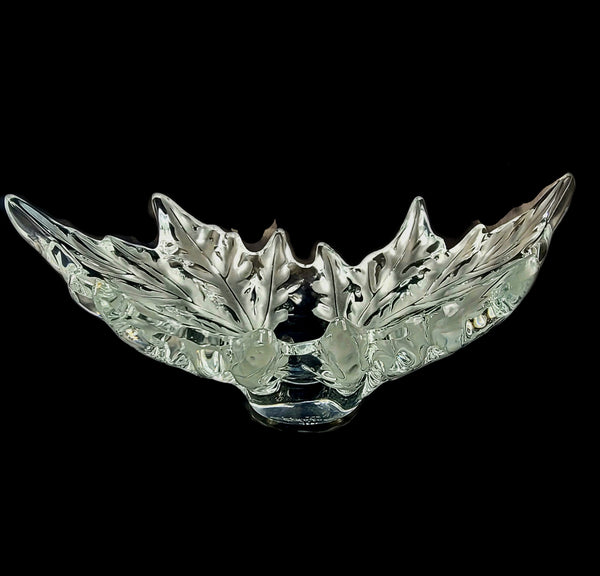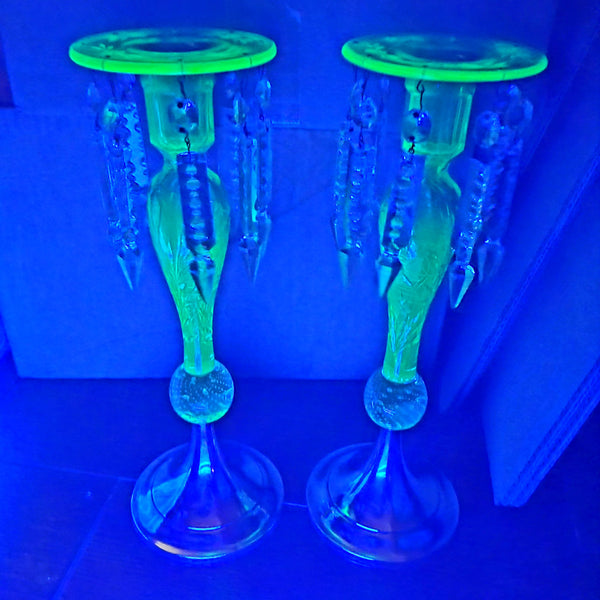How to Identify Antique Glass

Have you fallen in love with the beauty of art and antique glass? Have you given in to the addiction and now call yourself a collector? It is easy to find yourself in this situation with the alluring beauty found in so many types of glass collected by many today. This series of blog posts will take you through identification tips of various types of antique and 20th century glass.
One of the best tips someone taught me was to learn the feel of modern glass. When holding a drinking glass or vase feel the weight, color, translucency etc. In learning what modern glass looks and feels like it is easier to make distinctions between new and old glass. Old pieces of glass will give you hints of wear as a testament to its age. If a piece of glass is being sold as "antique" and looks new....it probably is not an antique.
The following characteristics of old glass will help you to identify the age of the piece and subsequent value.
Scratches- Inspect the bottom side of a piece of glass to look for scratches. Scratches are usually an indicator that you are looking at an older piece of glass. Scratches will typically go in every direction. Scratches all going in the same direction can tip you off to a new piece of glass made to look old or a repro.
Flaking - Flaking can be common around the rim of a piece of antique glass. A flake consists of a small flat, thin piece of glass and does not affect the value of a piece of glass.
Nicks - Nicks are common pinhead size pieces of glass that are missing, and do not affect the value of a piece of glass. The piece will not be mint, but many times considering the age of the piece is it not considered damage either. These can also be called "fleabites".
Chips- Chips can be damaging to the value of a piece of glass. They can be felt and have depth to them. Depending on the size of the piece of the glass and the size of the chip varies as to the impact on the value of the piece. Feel the chips. New chips will be sharp while old chips are often smoothed at the edges from time.
Wear to Gilt- Commonly gold gilt on glasses or frames will show wear depending upon the age of the piece.
Straw Marks - Considered irregularities in glass which can be seen when looking at a piece from the side. They are commonly noted in old pieces of glass.
Cracks- Cracks are not always easily noticed. Take a piece out into the sunlight to look for any hairline cracks that cannot be seen with indoor lighting. Cracks drastically reduce the value of a piece unless it is highly desirable.
Rough Spots or Areas - Let your fingers do the walking. Many times by running your fingers along the rim of a set of antique goblets you can feel any rough areas along the rims or bases.
Hopefully these tips will make you more savvy at estimating the age and potential value of a piece of antique glass. Remember, beauty is in the eye of the beholder. If there is damage to a piece that you are dead set on adding to your collection at least you have the tools to make you knowledgeable when making a deal.
Leave a comment
Comments will be approved before showing up.




